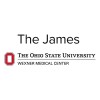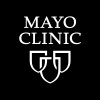
Prepare to Care, A Supported Self-Management Intervention for Head and Neck Cancer CaregiversHead...
CaregiverMalignant Head and Neck Neoplasm36 moreThis pilot clinical trial studies how well Prepare to Care kit works in improving caregiver support in patients with stage I-IV head and neck cancer that is new or has come back. Prepare to Care kit may increase knowledge about head and neck cancer and enhance stress-management skills.

Ficlatuzumab and Cetuximab in Recurrent/Metastatic Head and Neck Squamous Cell Carcinoma (HNSCC)...
CarcinomaSquamous Cell of Head and Neck3 moreThe epidermal growth factor receptor (EGFR) is both oncogene and prognostic biomarker in head and neck squamous cell carcinoma (HNSCC). EGFR's functional importance in HNSCC resulted in development of the first molecularly targeted strategy, the anti-EGFR monoclonal antibody cetuximab. Given the lack of therapeutic options for patients with recurrent/metastatic HNSCC after failure of cetuximab, there is strong scientific interest in understanding resistance in order to identify new therapies for this population. A possible resistance mechanism to anti-EGFR therapy in HNSCC is primary or compensatory activation of alternate growth factor receptors including c-Met. The MET oncogene encodes c-Met, an RTK bound exclusively by the ligand, hepatocyte growth factor (HGF). The HGF/c-Met signaling pathway converges with the EGFR network at both the PI3K/Akt and MAPK nodes. Laboratory data suggest the ability for reciprocal compensation between EGFR and c-Met. We hypothesize that HGF/c-Met pathway inhibition may overcome resistance to cetuximab in patients with HNSCC, such as those with clinical cetuximab resistance. Ficlatuzumab (AV-299) is a humanized HGF-inhibitory immunoglobulin G1 (IgG1) monoclonal antibody. The primary objective of this phase 1b study is to find the recommended phase II dose (RP2D) of the combination of ficlatuzumab and cetuximab in patients with recurrent/metastaticHNSCC. The dose-finding study design will follow a Narayana k-in-a-row design with k set to 2 to target a 33% rate of dose-limiting toxicity (DLT). In the dose-finding phase, a total of 8 patients will be treated if no DLTs are observed or 14 patients if at least one DLT occurs. An expansion cohort will then proceed at RP2D until 12 patients have been treated at that dose level with the combination of ficlatuzumab and cetuximab. We will evaluate biomarkers of HGF/cMet pathway activation in baseline tissue, plasma and immune cells for a preliminary relationship with clinical activity.

Effects of Diet and Exercise on Ductal Carcinoma in Situ
Ductal Carcinoma In SituBreast CancerThis pilot/feasibility trial seeks to explore whether an acute bout of negative energy balance prior to surgery affects biomarkers of neoplasia. Forty overweight or obese postmenopausal women diagnosed with ductal carcinoma in situ (DCIS) or early stage breast cancer (Stage I or II) who elect mastectomy or lumpectomy will be randomly assigned to 1-of-2 study arms: 1) an Attention Control Group that receives instruction on dietary approaches to correct nutritional deficiencies and progressive resistance training (PRT) that targets the arm ipsilateral to the affected breast; or 2) an Experimental Group that will receive PRT and guidance to correct nutritional deficiencies plus an intensive intervention to promote a 1.5-2 pound/week weight loss through diet, exercise, and behavior modification. This study will explore and contrast changes in body mass index (BMI) observed from enrollment to the time of surgery in the experimental vs. attention control arms, and also monitor changes in energy intake and physical activity. These changes will be studied in relation to the following endpoints: a) changes in select circulating biomarkers and gene expression related to cancer progression, hormonal status, inflammation and other energy-related factors; b) rates of tumor proliferation and apoptosis; c) tumor markers, e.g., insulin receptor, Vascular Epithelial Growth Factor (VEGF), Nuclear Factor kappa beta (NFkB), and phosphoproteins associated with the Convergence of Hormones, Inflammation and Energy-Rated Factors (CHIEF) pathway; and d) functional and health-related outcomes. Because both tumor tissue and blood will be examined from pre-to-post-intervention, this study will provide exciting new data that can elucidate pathways by which energy balance affects breast cancer progression. Although longer term weight loss is recommended for overweight and obese breast cancer survivors, it is not known whether placing the body in a state of negative energy balance will have a favorable impact on the tumor. If beneficial changes in tumor biology and the host environment occur with short-term, pre-surgical weight loss, this study provides proof of concept that weight loss may offer an acceptable and complementary treatment option that could be combined with standard therapies.

Nurse-Driven Telephone Intervention in Improving Side Effects in Cancer Patients Undergoing Chemotherapy...
Breast CarcinomaHead and Neck Carcinoma1 moreThis clinical trial studies how well a nurse-driven telephone intervention improves side effects in patients with cancer who are undergoing chemotherapy. Receiving calls from a nurse at home while receiving chemotherapy may improve the management of side effects and overall care in cancer patients.

Acceptability of Active Monitoring (AM) as a Treatment Option for Ductal Carcinoma in Situ (DCIS)...
Ductal Carcinoma in SituThe purpose of this research study is to evaluate a decision support tool for patients diagnosed with ductal carcinoma in situ (DCIS).

Study of Safety and Efficiency of the Use of Neutral Argon Plasma in Cyto-reduction of Miliary Implants...
Peritoneal CarcinomatosisNeutral argon plasma vaporization shows little damage to normal tissue and allows a complete removal of tumor tissue, that is, without leaving any cell debris viable tumor. Our primary objective is to evaluate the effectiveness and safety of neutral argon plasma on peritoneal implants with different dosimetry in vivo and ex vivo.

Psychosexual Intervention in Patients With Stage I-III Gynecologic or Breast Cancer
Ovarian SarcomaOvarian Stromal Cancer60 moreThis randomized phase II trial studies how well psychosexual intervention works in patients with stage I-III gynecologic or breast cancer. Psychosexual intervention may improve sexual and psychosocial function.

Dexamethasone in Reducing Oral Pain and Dry Mouth After Surgery in Patients With Oropharyngeal Cancer...
DysphagiaPain3 moreThis randomized pilot clinical trial studies dexamethasone in reducing oral pain and dry mouth after surgery in patients with oropharyngeal cancer. Dexamethasone may help lower pain and dry mouth caused by surgery.

Acetylcysteine Rinse in Reducing Saliva Thickness and Mucositis in Patients With Head and Neck Cancer...
MucositisOral Complications81 moreThis randomized pilot clinical trial studies whether acetylcysteine oral rinse will lessen saliva thickness and painful mouth sores in patients with head and neck cancer undergoing radiation therapy. Side effects from radiation therapy to the head and neck, such as thickened saliva and mouth sores, may interfere with activities of daily living such as eating and drinking, and may also cause treatment to be stopped or delayed. Acetylcysteine rinse may reduce saliva thickness and mouth sores, and improve quality of life in patients with head and neck cancer undergoing radiation therapy.

Video-Based Treatment Options for Basal Cell Carcinoma
Basal Cell CarcinomaThe purpose of this study is to determine if presenting treatment options to basal cell carcinoma patients in video format will improve efficiency and allow patients to receive consistent, comprehensive, visually-depicted treatment option information to improve patient quality of care. Patients can learn more about treatment options as they are depicted visually so as to better assist them in understanding treatment risks and benefits to confidently make a well-informed decision. Primarily, the study will evaluate efficiency when using the education video medium. The study will also evaluate the effectiveness of the video medium as an aid to decision making in addition to standard of care in comparison to the standard of care alone. Additionally, the study will evaluate both patients' and dermatologists' satisfaction of the educational intervention.
